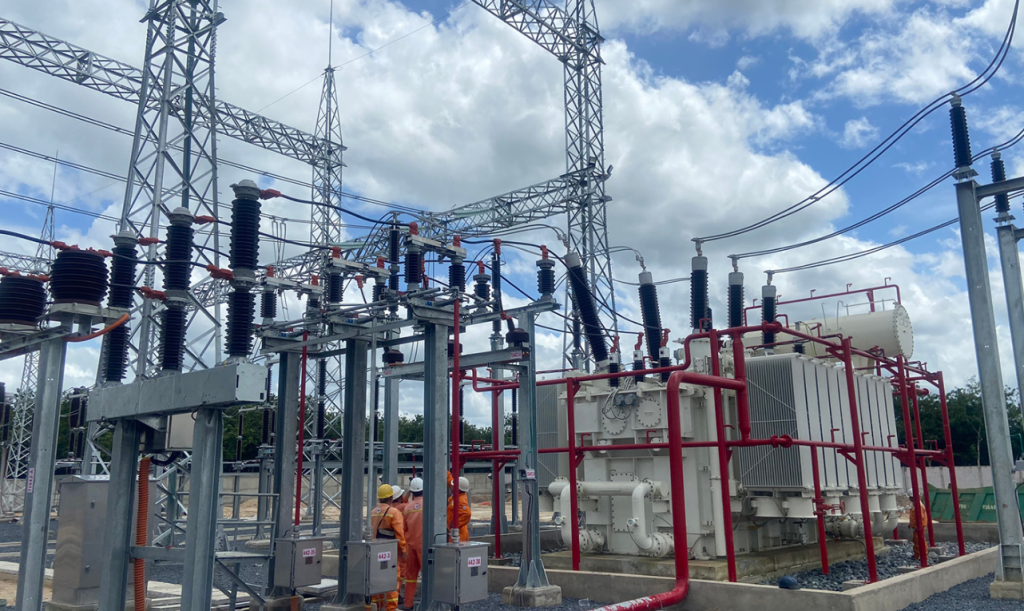Introduction
In modern electrical distribution systems, both Ring Main Units (RMUs) and switchgear are vital components for managing medium voltage (MV) and low voltage (LV) power networks. While they may seem interchangeable at first glance, RMUs and traditional switchgear have distinct roles, configurations, and applications.
This article explores the differences between RMUs and switchgear, clarifies their respective working principles, and provides insight into their usage, technical parameters, and selection criteria. Whether you’re designing a substation or upgrading a distribution network, understanding the nuances of these devices is essential for making informed decisions.

What is Switchgear?
Switchgear is a broad term used to describe the combination of electrical disconnect switches, fuses, and/or circuit breakers that are used to control, protect, and isolate electrical equipment. Switchgear is essential for de-energizing equipment to allow work to be done and for clearing faults downstream.
Types of Switchgear:
- Low Voltage Switchgear: Used in systems up to 1kV.
- Medium Voltage Switchgear: Typically operates from 1kV to 36kV.
- High Voltage Switchgear: Operates at voltages above 36kV.
Functions:
- Protects electrical circuits from overloads and faults.
- Allows isolation and control of different sections.
- Maintains safety during maintenance.
What is a Ring Main Unit (RMU)?
A Ring Main Unit is a type of medium voltage switchgear designed specifically for loop-type network configurations. It connects distribution transformers in a closed ring or loop, allowing power to flow from either side. If one line fails or requires maintenance, the other can continue to supply power.
Key Characteristics of RMUs:
- Compact and sealed units.
- Typically gas-insulated using SF₆ or solid insulation.
- Combines load break switches, circuit breakers, and earthing switches.
- Designed for urban or space-limited installations.
Technical Parameters Comparison
| Feature | Ring Main Unit (RMU) | Traditional Switchgear |
|---|---|---|
| Voltage Range | 12kV – 24kV | 1kV – 36kV (MV) |
| Insulation | SF₆ Gas / Solid / Air | Air / Oil / SF₆ |
| Short Circuit Capacity | Up to 25kA | Up to 40kA (varies) |
| Configuration | Fixed, compact, looped | Modular and flexible |
| Protection Devices | Circuit breaker + fuse or LBS | Circuit breakers, relays |
| Installation | Outdoor / Indoor | Usually indoor |
| Maintenance | Low (sealed unit) | Regular maintenance |
| Lifespan | ~30 years | ~25-30 years |
| Standards | IEC 62271-200, IEC 60265 | IEC 62271, IEC 60076 |
Application Areas
Ring Main Unit Applications:
- Urban distribution networks
- Underground cable systems
- Renewable energy farms (solar, wind)
- Commercial complexes and high-rise buildings
- Secondary substations
Switchgear Applications:
- Industrial facilities with large motor loads
- Primary substations
- Utility substations
- Manufacturing plants
- Power generation facilities
RMUs shine in distribution environments where space-saving and reliability are priorities, while traditional switchgear is more suitable for expansive, customizable installations.
Market Trends and Background
According to market research from IEEMA and technical papers on IEEE Xplore, the global demand for compact, smart, and low-maintenance MV solutions is growing. RMUs have seen increased adoption due to:
- Urbanization: Need for compact and underground-friendly units.
- Smart Grid Development: RMUs support SCADA and automation.
- Reliability Needs: RMUs ensure supply continuity through loop configurations.
Switchgear, on the other hand, continues to evolve with innovations like solid-state breakers, IoT-based sensors, and digital protection relays.
Source: IEEE Xplore: Smart Grid Distribution Technologies, IEEMA Annual Report
Pros and Cons
RMU Pros:
- Compact footprint
- Sealed and maintenance-free
- High reliability
- Suitable for automation and smart grid integration
RMU Cons:
- Higher initial cost
- Limited configurability
- Sealed gas systems require proper handling
Switchgear Pros:
- Highly customizable
- Can handle higher fault currents
- Supports diverse protection schemes
Switchgear Cons:
- Requires more space
- Needs periodic maintenance
- More complex to install
Selection Guide: Which One Should You Choose?
| Situation | Recommended Equipment |
|---|---|
| Limited installation space (e.g., urban centers) | Ring Main Unit (RMU) |
| High configurability required | Traditional Switchgear |
| Need for minimal maintenance | RMU |
| Industrial plant with diverse loads | Switchgear |
| Automated remote control desired | RMU with SCADA |
| Large utility-scale substation | Switchgear |
Tip: Always consult with OEMs such as ABB, Schneider Electric, and Siemens for project-specific configuration and pricing.
Authority Citations
- Wikipedia – Ring Main Unit
- ABB Medium Voltage Product Guide
- Schneider Electric Ring Main Units
- IEEE Smart Distribution Resources
Frequently Asked Questions (FAQ)
A1: Yes. An RMU is a specialized form of medium voltage switchgear designed for loop distribution networks with compact and sealed construction.
A2: RMUs can be used in industrial settings, but they are generally favored in compact environments. Switchgear offers more flexibility for complex industrial systems.
A3: Air-insulated systems are environmentally friendly but larger in size. SF₆ offers compact design and better insulation but requires strict leak control due to its greenhouse gas properties.
Both Ring Main Units and traditional switchgear are critical in power distribution but serve different needs. RMUs offer compactness, loop continuity, and smart capabilities, making them ideal for urban networks and secondary substations. Switchgear, on the other hand, provides flexibility, power handling, and expandability for larger or more complex installations.
By understanding their differences, technical features, and application contexts, engineers and decision-makers can select the best-fit solution for their electrical infrastructure.
Get a printable version of this page as a PDF.